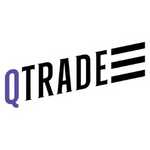Stocks that are widely covered in media today are usually those of large and well-established companies.
The penny stock universe exists almost as a separate ecosystem; generally well outside of day-to-day coverage. In Canada, the penny stock universe is more closely intertwined with the general stock market than in the US.
The textbook definition of a penny stock is a share of a company trading at less than $1.00. In today’s day and age, penny stocks refer more commonly to companies that are trading at less than $5.00 per share.
US penny stocks are traded over-the-counter (OTC) and not on an exchange like most regular stocks.
Here are a few reasons why penny stocks are riskier than regular stocks:
- The quality of the information found in penny stock company statements can be low
- The companies usually do not have a long-term track record of results
- Liquidity can be very low for some penny stocks, affecting your trading
- Penny stocks are frequently used in market manipulation schemes because of their small size
Canadian Penny Stocks: Trading Through an Exchange
In Canada, you can find numerous stocks worth less than $5 per share on multiple exchanges. These include the Toronto Stock Exchange, the TSX Venture Exchange, the Canadian Securities Exchange, and the NEO Exchange.
Listed penny stocks in Canada trade the same way as other stocks but make sure to keep an eye out on the bid-ask spread.
US Penny Stocks: Over-The-Counter Trading
As mentioned before, US penny stocks trade OTC. When an exchange-listed stock trades, the exchange usually matches a buying party with a selling party. This helps to improve liquidity in the stock.
US Penny stocks are usually bought out of a firm’s inventory, through your brokerage. These firms are called market makers.
In exchange for taking the risk of holding penny stocks in inventory, market-making firms usually charge a wide price spread to buyers and sellers.
Two Approaches to Buying Penny Stocks
Penny stocks can be bought in two ways. They are either directly bought by you through a discount brokerage or through an advisor at a full-service brokerage.
The steps to buying penny stocks in Canada through a discount brokerage include:
- Determining that penny stocks are appropriate for you
- Opening the appropriate account with a brokerage that allows the trading of penny stocks.
- Placing the order for the penny stock, either through the brokerage’s online platform or over the phone.
- Consistently monitor your penny stocks to make sure that they are still aligned with your investment objectives and overall goals.
Buying penny stocks through an advisor can be done by having a discussion around them. They can either do research on your behalf and recommend penny stocks to purchase, or you can ask them to buy specific penny stocks on your behalf.
We will cover how to responsibly buy penny stocks in Canada in more depth below.
How to Buy Penny Stocks in Canada – Two Approaches
Approach 1: Trading Penny Stocks through a Discount Brokerage

The main approach to buying penny stocks in Canada is to do the trading yourself through a discount brokerage. This involves four steps.
Step 1: Determining that Penny Stocks are Appropriate
You must make sure that the stock you wish to buy matches your risk tolerance and goals. Make sure to think of the following:
- How willing and able are you to take on risk?
- How soon could you sell your stock position?
- What company-specific risks exist?
- How attractive is your return potential?
- Is the company involved in anything that goes against your personal beliefs?
Most brokerages in Canada consider equity investments as being at least medium risk. Most penny stocks would be considered high risk.
Investing in penny stocks requires:
- A high-risk tolerance, which includes your willingness and your ability to take risk
- Potentially paying additional broker-specific fees if trading US OTC penny stocks
- Trading into a much larger bid-ask spread than usual
- Owning a potentially illiquid position over time
If you have determined that penny stocks are appropriate given your situation, the next step involves choosing an appropriate broker to begin trading.
Step 2: Opening an Appropriate Account with a Discount
Listed penny stocks in Canada can be purchased within any account. This includes your tax-free savings accounts and registered retirement savings plans.
The appropriate account for trading US penny stocks is the regular non-registered investment account. This is because US penny stocks, as well as other OTC-traded investments, are considered non-qualifying investments for accounts such as TFSAs and RRSPs.
In terms of brokerages that are a good fit for trading penny stocks, there are three to consider: Questrade, Qtrade, and Interactive Brokers.
1. Questrade

- Complexity: Low
- Fees: Low
- Accepts Penny Stock Trades: Yes
Questrade is first on our list as an ideal discount brokerage to use for penny stock trades. Questrade charges some of the lowest trading fees in Canada for stock trades and is fairly easy to use for newer or novice traders.
2. Qtrade
- Complexity: Low
- Fees: Low
- Accepts Penny Stock Trades: Yes
Qtrade is a second choice to Questrade as another simple-to-use and low-cost discount brokerage. Qtrade frequently wins awards for its online brokerage here in Canada.
3. Interactive Brokers

- Complexity: Low
- Fees: Low
- Accepts Penny Stock Trades: Yes
Interactive Brokers is the discount brokerage to consider if you are a more seasoned trader or investor. The platform is more complex than the ones offered by Qtrade and Questrade, providing more value to investors that can take advantage of the additional information.
Once you have set up an account with a discount brokerage of your choice, it’s time to place your trades.
Step 3: Placing your Penny Stock Trade
Canadian listed penny stocks can be traded like any other stocks in Canada. The two approaches to trading to consider here include market orders and limit orders. There are specific situations in which one is better than the other.
Market Orders
A market order tells the brokerage to immediately execute the trade at the best available price. The market order allows you to control when a trade is executed but not what price the trade is filled at.
If your order is for many shares, you may trade a large number of shares at a different price than what is currently listed. Since the risk of getting an unfavourable price fill is high, market orders should only be used if you are reacting to urgent news, or if you need the trade to be filled as soon as possible.
Limit Orders
Limit orders allow you to set the price at which a stock is bought or sold. This gives up control over when the trade gets executed, which depends on which way the stock moves over time.
If you place a limit order to buy a stock at a higher price than the current listed price, you will immediately buy at least a portion of the order.
If you place a limit order to sell a stock at a lower price than the current listed price, you will immediately sell at least a portion of the order.
Brokerages will fill your limit order at better prices if they can. This means filling your limit buy at a lower price or filling your limit sell at a higher price.
Placing the Canadian penny stock trade can be done over the phone or by logging on to your discount brokerage’s trading platform.
Trading US Penny Stocks
If you are looking to buy US penny stocks, this will have to be done on the US dollar side of your accounts here in Canada. To trade OTC US penny stocks, you will have to find information on the stock through the OTC Markets Group.
Once you have the necessary information, the trade can be placed through your discount brokerage by inputting the ticker, or by calling to place the order.
Step 4: Monitoring your Penny Stocks
Now that one or more penny stocks are part of your portfolio, it is important to periodically review your positions. It’s reasonable to expect large price movements in these companies due to their riskiness. As time passes, consider that:
- The value of your penny stock could go to zero.
- Your US penny stocks may begin trading on an exchange through a process known as listing, due to meeting listing requirements.
- The liquidity of your position could change over time due to supply or demand
Always have an exit strategy in place so that you don’t end up holding losing penny stock positions all the way to zero. The best way to do this is to set up stop-loss orders with every position.
Stop-loss orders are sell orders that will automatically execute if a stock falls to a specific price. This can take emotions out of trading by allowing you to automatically close positions that fall in value by too much.
Make sure that you are reviewing your portfolio at least quarterly to make sure that everything is progressing smoothly.
Approach 2: Buying Penny Stocks through an Advisor

Penny stocks can also be purchased through a full-service brokerage, also known as an advisor.
Before an advisor can purchase penny stocks for you, he must be licensed under IIROC. IIROC-licensed advisors are able to trade stocks for clients. MFDA-licensed advisors can only deal with mutual funds, which do not typically contain penny stocks.
In most cases, advisors will have very little information on penny stocks. Stock research is usually done on large and more well-established companies by most research firms. This does not mean that your advisor can’t research penny stocks and make recommendations.
IIROC advisors that work on a fee basis typically charge an advisory fee. This is a fee that is paid to them, on top of any underlying fund or investment strategy MER.
We do not recommend this approach as working with an advisor typically results in a very high amount of total fees paid per year.
Conclusion

Penny stocks may be advertised as having immense growth potential, but they always carry the risk of going to zero. The companies behind these penny stocks are typically newer and have a short-term operating track record.
If you are looking to buy penny stocks in Canada, you will find a lot of them listed on traditional exchanges. Within the US, penny stocks are traded over the counter.
Penny stocks can be bought either directly through a discount brokerage or through an advisor that you may be working with. We recommend the first approach, as the latter can cost you a high amount of fees on an annualized basis.
Before investing in penny stocks, make sure that you have an appropriate financial plan in place. This is one that considers your circumstances, risk tolerance, and long-term objectives.





